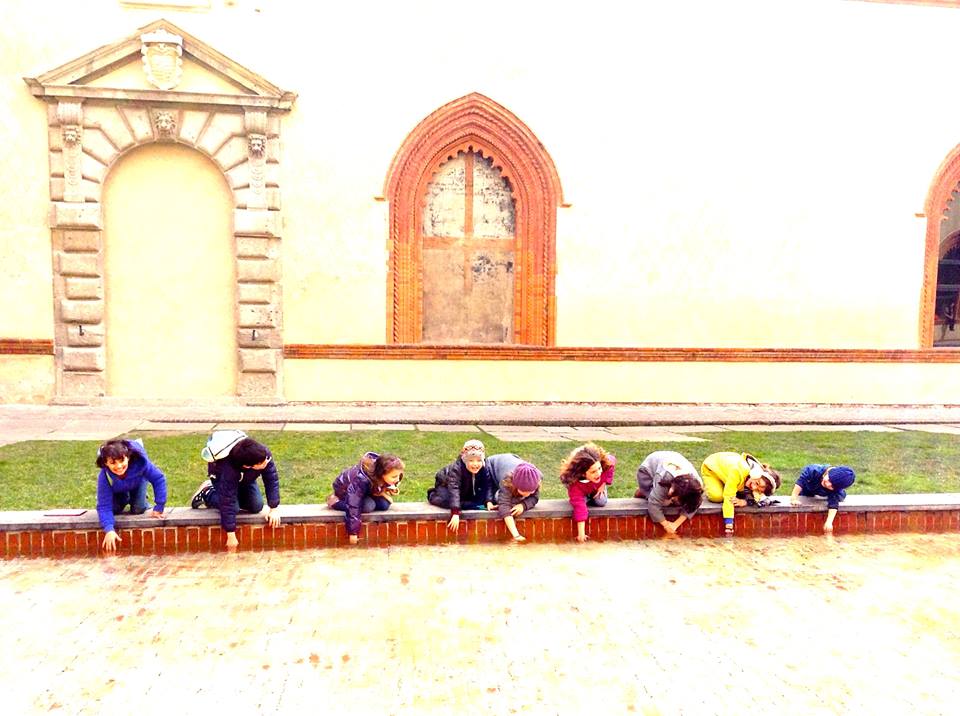A year and half has now passed since our first app was released (Art Stories The Sforza Castle) and we have gathered together various things that make us happy.
Building our first app was lengthy work, full of mistakes, naïvety and second thoughts. Developing apps for children demands a complex creative process and careful selection of content, which really challenged us. The results are on the store, and available for everyone.
How do we measure the success of an app?
By the number of downloads? The turnover? The number of times it has been featured on the store? By how obsessively children play with it? The debate about this is ongoing. The above questions reflect the long series of assessment parameters used in the wild west of the app world, both for children and adults. These parameters are all important and valuable. But what is important for us?
This is an open issue: the aforementioned questions reflect the key parameters applied for measuring the success of an app, be it for children or not. They all have a meaning and a specific value.
But now, what are we exactly interested into?

Our aim, when we started thinking about Art Stories, was to create an accessible and affordable tool that helped parents, teachers, or any adult who deals with children to explore the city, and structure experiences and visits that were satisfying for both.
So we imagined a tool that was rich from various points of view. We sought out brilliant illustrators, who were capable of transporting children to a remote past with grace and delicacy and without being boring. Take a look at the pages on Cinzia Franceschini, Cecilia Negri, Roberta Ragona.
We selected content that tell stories in a direct and clear way, without falling into the patronizing tone often used when speaking to children. We chose terms that are unusual and refined, aware that coming across unknown words can ignite a certain mystery and raises the bar for learning.
We sought out small games and animations that did not overwhelm the content but accompanied the chldren’s discovery in a discreet and uninvasive way. We tried to produce gentle tools that the children and adults who used them would like. Did we succeed? There is certainly room for improvement, and with each app, we become aware of possible improvements and changes, as well as the obstacles that prevent us from producing the perfect app.
But there’s plenty to comfort us: things that for us are important benchmarks, alongside those that are universally recognized (which are numerical nature, so have a certain intrinsic objectivity). Want to know what they are? We obviously want to tell you…. with a few specific examples that say a great deal about what we are doing and the direction we are taking.
Agnese – on the bike with her mother – points out a poster for the exhibition “From the Visconti to the Sforza”, with an excitement beyond her seven years: “Mummy, I know them, I want to go!”. In reply to the legitimate question asked by her parent, “But where have you heard of them?”, Agnese says, ‘From that app that you downloaded for me”. Art Stories Castle, that is.
Arturo, who is three years old, responds to his mother’s monologue, ‘Shall we go through Bligny or Beatrice d’Este?’, raises his eyebrows and exclaims ‘Beatrice d’ETTE? I know her’. Again the Castle app effect…
We have received many emails and short video clips from parents showing their children using parts of the app. They also told us they then had to go to the actual place to see in person that what’s on the app is actually true!
This is not a mathematical benchmark and it’s difficult to measure, but for every question (or answer) that a child poses in front of a historical site, work of art or historic figure thanks to Art Stories, we place an imaginary notch that measures the educational success that we are aiming for. In brief, with our new series Art Stories 4Fun, we will show you how we also try to reach children not normally exposed to exhibitions and museums. Happy 2016 and stay tuned!





